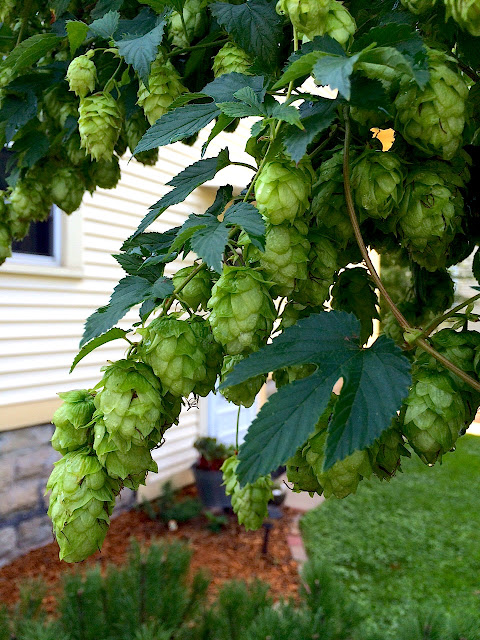Hop farms were omnipresent here. By the end of the 1860s, Winnebago County was the fourth largest producer of hops in the State of Wisconsin, which was then growing 20 percent of the nation’s hops. During the peak years of the 1860s and 1870s, nearly 140 acres of land in Winnebago County was given over to the cultivation of hops, with an acre producing more than 1,000 pounds of hops on average.
The map below illustrates the extent of hop farming in Winnebago County in 1870. This is adapted from a map compiled from United States Census of Agriculture data and published in The Wisconsin Geographer. Each large green dot represents 10,000 pounds of hop production (approximately 180,000 pounds in total).
Though commercial hop farming was conducted throughout much of Wisconsin, the majority of it was based in the south-central portion of the state. Sauk County was the epicenter. Winnebago County represented something of an outlier. In comparison to Winnebago, hop farming in neighboring counties ranged from limited to almost non-existent. The hop boom here was partly the result of the unique mix of settlers who began arriving to the area in the 1840s.
Yankee settlers such as Silas Allen and John Braley migrated from the hop growing regions of the east and began seeding a hop culture in Winnebago County soon after their arrival. Coupled with the arrival of the Yankees was a torrent of German immigrants. They brought their beer culture with them and immediately began establishing breweries.
By 1870, there were 10 breweries operating within Winnebago County alone and that many again making beer in neighboring counties. With breweries of this period using approximately 1.5-2 pounds of hops per barrel of beer, hops were in high demand locally (for comparison, most modern craft breweries use about 1.2 pounds of hops per barrel. Macro brewers average 0.2 pounds per barrel).
Some of the larger breweries in the area were capable of consuming nearly 3,000 pounds of hops annually. And what wasn't used locally was sent to Oshkosh for distribution. One New York hop buyer took up residence in the city. Meanwhile some local businesses found it profitable to play supporting roles in the growing hop trade.
But the bounty was short lived. The decline in hop farming here occurred rapidly. After the the great harvests of 1867 and 1868, hop prices fell sharply. In the latter half of the 1870s, farmers here began digging up their hop yards to put their land to more lucrative use. In 1876, there were 138 acres of land devoted to growing hops in Winnebago County. By 1880, that had been reduced just 33 acres. At the close of the 1880s commercial hop farming in Winnebago County reached its end.
There's little that remains of the hop growing boom that occurred here more than a century ago. But among the scarce remnants are the cluster hops that grow wild in some areas where hop farms once resided. At this time of year, they're reaching their annual maturity. They are a perennial reminder of what once was in Winnebago County.
 |
| Cluster hops cultivated from rootstock found at the location of a former hop yard in Winnebago County. |









No comments:
Post a Comment